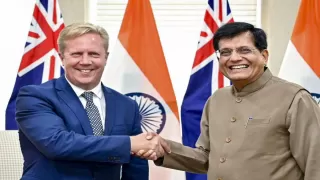The term "act of war" refers to hostile actions by a nation that violate another nation's sovereignty, often provoking a military response. Between India and Pakistan, two historic rivals with nuclear capabilities, this concept has broad and evolving implications. Over decades, acts of war have taken various forms—from conventional invasions to cross-border terrorism and now, surgical and strategic strikes.
This article examines what qualifies as an act of war, provides historical context, and analyzes Operation Sindoor (2025)—a recent and significant military operation that has escalated tensions to a dangerous level.
1. What is an Act of War?
Under international law, an act of war includes any of the following:
- Armed invasion or occupation
- Aerial or missile strikes on another nation's territory
- Support for armed insurgencies or terrorism
- Blockades (land, air, or sea)
- Destructive cyberattacks targeting infrastructure
Such actions often breach the UN Charter and invoke the right to self-defense under Article 51. Importantly, a formal declaration of war is not required for these acts to be recognized as warfare.
2. Historical Acts of War: India-Pakistan Timeline
India and Pakistan have had multiple violent confrontations since 1947. Below are key examples where acts of war triggered military responses:
| Year | Event | Act of War | Outcome |
|---|---|---|---|
| 1947–48 | First Kashmir War | Tribal invasion by Pakistan-backed forces | India intervenes militarily; Kashmir conflict begins |
| 1965 | Second Kashmir War | Operation Gibraltar: Pakistani infiltration | Full-scale war across western front |
| 1971 | Bangladesh Liberation War | Pakistan's airstrikes on Indian airbases | India retaliates; leads to creation of Bangladesh |
| 1999 | Kargil War | Pakistani soldiers infiltrate Kargil region | India launches Operation Vijay to reclaim territory |
3. Modern Warfare: From Terror to Precision Strikes
In the 21st century, the definition of acts of war has expanded:
- 2001 Parliament Attack and 2008 Mumbai Attacks were considered indirect acts of war by India due to their planning in Pakistan.
- 2016 Surgical Strikes and the 2019 Balakot Airstrikes were India's military responses to cross-border terrorism.
4. Operation Sindoor (2025): A Modern Military Response
Background
On April 22, 2025, a devastating terrorist attack in Pahalgam, Jammu & Kashmir, killed 26 Hindu pilgrims. India blamed Lashkar-e-Taiba and Jaish-e-Mohammed, groups allegedly operating from Pakistan. The scale and brutality of the attack prompted public outrage and demands for military retaliation.
India's Response: Operation Sindoor
Launched on May 7, 2025, Operation Sindoor marked a bold escalation in India's approach to cross-border terrorism.
Objectives
- Target terrorist camps and launchpads in Pakistan-administered Kashmir and Punjab province.
- Send a strong message to Pakistan's establishment regarding continued harboring of terrorist groups.
- Minimize civilian casualties through precision targeting.
Execution
- Air Force and missile units conducted coordinated strikes using drones, guided missiles, and stealth aircraft.
- Targets included suspected training camps, arms depots, and communication hubs.
- Reports suggest 5–6 key sites were destroyed across Muzaffarabad, Kotli, and Bahawalpur.
- India did not officially declare war, instead framing the strikes as counter-terrorism operations under its right to self-defense.
Indian Government's Stance
"A limited but decisive action targeting terror infrastructure. India reserves the right to defend its citizens when the state sponsor of terrorism refuses to act."
5. Pakistan's Reaction
Pakistan termed the strikes as a "naked act of aggression", claiming civilian casualties and damage to infrastructure. The government:
- Activated air defense systems and retaliated with artillery shelling along the LoC.
- Claimed to shoot down two Indian drones and jammed communication signals.
- Began mobilizing troops near Sialkot and Rawalakot.
Escalation
- Heavy firing reported at LoC sectors: Poonch, Rajouri, and Uri.
- Both countries downgraded diplomatic ties and suspended cross-border trade.
- India paused water-sharing cooperation under the Indus Waters Treaty, which Pakistan warned could be seen as a serious provocation.
6. International Reactions
| Country/Body | Response |
|---|---|
| United States | Urged restraint, warned of "unacceptable escalation" between nuclear powers |
| United Nations | Called for dialogue and accountability; emphasized human rights in Kashmir |
| Russia & France | Offered to mediate |
| China | Warned against "regional destabilization" and asked India to respect territorial integrity |
7. Legal Perspective
Although India maintains that Operation Sindoor was a defensive action against non-state actors, Pakistan asserts it was a violation of sovereignty and tantamount to an act of war. The lack of a formal declaration keeps the situation in a legal gray zone, reflecting how modern warfare often avoids traditional labels but still leads to real-world consequences.
Conclusion
The 2025 conflict highlights how "acts of war" have evolved in the India-Pakistan context. They no longer need to involve conventional battles alone. Proxy terrorism, covert operations, and retaliatory strikes are now integral to regional military strategy. Operation Sindoor exemplifies India's shift toward preemptive self-defense, while Pakistan's response shows how thin the line is between counter-terror operations and open conflict.
In a nuclear-armed region, clarity, diplomacy, and restraint remain the only sustainable path forward. Without it, any act—intentional or perceived—can spiral into a war with devastating consequences.
Key Takeaways
- Acts of war now include cyberattacks, proxy wars, and precision strikes, not just invasions.
- Operation Sindoor (2025) marks a new phase in India's counter-terror doctrine.
- Pakistan's retaliation risks full-scale conflict, raising global concerns.
- International mediation is crucial to prevent escalation between nuclear-armed rivals.
Also Read: Bhool Chuk Maaf Theatrical Cancelled – Streaming on Prime Video




























